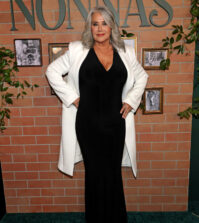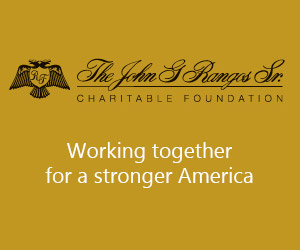- The Brothers Gerazounis: Engineering the Lifeblood of Buildings
- The Hellenic Initiative Summer Youth Academy Empowers Underprivileged Children Through Sports
- CAPTAIN MARIANTHI KASDAGLI: Charting her own course at sea
- Oscar nominee Lorraine Bracco of ‘Goodfellas’ is having ‘More Fun’ than ever before
- Voice And Vision: Grigoris Maninakis, 50 Years Of Greek Music In America
St. Nicholas Church and National Shrine: An Orthodox Place of Worship Rises to International Prominence
Of the many inspiring stories that emerged in the wake of our nation’s unfathomable tragedy on September 11, 2001, one of the more indelible would be that of the St. Nicholas Greek-Orthodox Church. The small church, built in 1916 by Greek immigrants in Lower Manhattan, had held a unique repose for 85 years in a neighborhood that was transformed into the world’s hub for finance and commerce, just footsteps away from the World Trade Center. But, on that fateful day in September, the church was reduced to rubble as a result of the collapse of the second tower. Although, thankfully, no one was inside the church at the time, virtually all relics were lost. And, thus began a 21 year Odyssey to rebuild it.

On July 4, 2022 – the church was consecrated as the “St. Nicholas Greek-Orthodox Church and National Shrine,” a breathtaking architectural marvel designed by world-renown Spanish architect Santiago Calatrava. It was a highlight of a remarkable journey that transformed a little church into an internationally renowned symbol for the power of faith and a beacon for hope and resilience in the face of religious intolerance. Now, the Church has the unique distinction of being the only house of worship at Ground Zero.
And a year ago, last December, the Church and Shrine re-opened to the public for the first time since 9/11. Since then, almost 140,000 people have walked through its doors. Incredibly, the vast majority of visitors have not been Greek-Orthodox, a testament to the Church’s and Shrine’s other purpose: to celebrate and unite people as a bastion of religious freedom.
The St Nicholas story is also a story of the dedicated and tireless efforts of several leaders from both the Greek-American community and the Archdiocese who willed it to happen. Since its inception from just after the tragedy, the mission to rebuild the church had been wrought with obstacles, from a jumble of red tape with the Port Authority to cost overruns and funding shortages. It wasn’t until the Greek Orthodox Archdiocese In America, along with Governor Andrew Cuomo and the Port Authority, called for the creation of a new entity that would oversee the completion of the project. And thus, the “Friends Of St. Nicholas,” was formed in 2019 to meet that challenge. The organization would count some of the most notable Greek-Americans in the nation as its board members
But, the mission of the “Friends Of St. Nicholas” owes much of its resounding success to the stewardship and dedication of Michael Psaros, its Chairman and guiding force. Psaros, a prominent New York businessman and philanthropist, steered the project to completion in three short years, having raised over 60 million dollars – a remarkable feat. But, to engage with Mr. Psaros, is to be rewarded with a man of incredible passion for his faith and community and an indefatigable energy that reverberates with gratitude and pride for the eminence of a St. Nicholas Church And Shrine that will shine for generations to come. “The members of the Friends Of St. Nicholas, a group of our leading Greek-Orthodox Christians in this country, are heroes. They literally put their names and reputations on the line to build this Church,” he says. “I am deeply grateful for their extraordinary leadership that has resulted in the miracle of St. Nicholas,” as he thanks “Friends’” Vice Chairman Dennis Mehiel, a prominent community leader, and Father Alex Karloutsos Protopresbyter of the Ecumenical Patriarchate for their valuable roles. And, of course, the commitment of the Church leader. “Also galvanizing the effort was the declaration by His Eminence, Archbishop Elpidophoros – the day of his Enthronement – that the completion of St. Nicholas was one of his top priorities,” Psaros says. “That sent a message to everyone.” Father Alex Karloutsos also reflects on how the “Friends” changed the course: “It almost divided us as a community, but so many people stepped up and made sure that division did not happen.”
![]()
But, now that the doors have opened and the “miracle” has come to fruition, Psaros is proud to share the great new moments of the re-born Church and their significance. He mentions this past Pascha as one of them. “On Good Friday, we had 140 people inside the Church. When we opened the doors for the Procession of the Epitaphion, we were shocked see over 2,000 people waiting outside,” he says. And on Easter “We had thousands of people holding candles to proclaim “Xristos Anesti.’ To celebrate the Resurrection at Ground Zero is unlike anything you will ever experience.”
The exuberance is also shared by St. Nicholas Parish Council President, Demetri Papacostas. “We have thousands of people who come through that have never experienced Orthodox Christianity. It’s new to them,” says Papacostas. “So, we literally have become witness to Orthodoxy in America because we have so many people coming through here.” Papacostas is also eager to point out the unique iconography in the Church, created by Father Loukas from Mt. Athos, which incorporates depictions of New York City, the victims, and the first responders. One of those is the Platytera over the altar that shows the Virgin Mary protecting the city of New York. Another is the depiction of the Anastasis with Christ pulling firefighters and first responders from death. “And those were modeled after people who actually gave their lives on 9/11. It’s so touching and amazing,” says Papacostas. “It is a unique place that communicates our responsibility we have to 9/11.”
The edifice itself, the only place of worship ever designed by Calatrava, is modeled after the Hagia Sophia and The Chora, two of the most recognizable symbols of both Byzantium and Orthodoxy. Moreover, the marble used to sheath the exterior was Pentelic marble, the same marble used to build the Parthenon. It’s a type of marble that is used on a very limited basis, but the Greek government agreed to its export for use in the Church. Fr. Karloutsos is quick to point out the significance: “The Pentelic marble truly reflects our Greek legacy of freedom and democracy.”
The real beauty of the materials used in the design truly gleam at night when the lights from the Church radiate in an ethereal glow that is downright stunning. Other singular touches include sayings from the Book Of John and from Pericles’ famous funeral oration at the entrance.
Perhaps the greatest gift from the effort to rebuild St. Nicholas is the sort of personal transcendence it bestows upon those who’ve worked tirelessly to will it to being. For Michael Psaros it’s not only the wedding of his daughter, held at the church, “the greatest day of my life,” he says, but the shared experience with others. “I love to observe the faces of the visitors who are entering an Orthodox church for the first time,” he offers. “You have to see their faces. You can tell they are experiencing something spiritual in their own way. They immediately start asking questions about our faith. This is why we built St. Nicholas; this is why St. Nicholas matters.”
And, for Papacostas, it’s perhaps the outpouring of parishioners and volunteers who’ve come to make the Church their own. They come from all over the Tri-State area. “We have more young people coming to the Church than I have seen in any other parish,” he says. “And they are becoming our stewards.” And that involvement will spur on more events at the Church which have already included piano recitals and choral chanting, as well as an exhibit of recovered relics from a Greek monastery done in conjunction with the Morgan Library.
It’s also a precious moment for Andrew Veniopoulos, the Executive Director of the Church and Shrine, whose father’s first paying job was to fix the iconostasis of the old church. “After I was born, he used to take me down there and show me the icon he fixed with great pride; that it was something he did and how he started in America,” says Veniopoulos. “When I was asked to be the project executive in the rebuilding of the Church, I did it in honor of both my parents who have since passed away.”
And now, the new St. Nicholas can take its place as the Hagia Sophia of the New World. And, like its predecessor, it will not only preside as a symbol of Orthodoxy but a candle for light in the face of darkness. The St. Nicholas Church And Shrine is open to the public from Monday to Sunday, 10am – 3pm, except on Tuesdays. The Church is open for Orthros on Sundays at 9:30am and Divine Liturgy at 10am.















0 comments